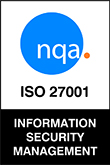As organizations grow in scale and complexity, managing user access to critical systems is no longer just a compliance task—it’s a foundational pillar of enterprise cybersecurity and identity and access management (IAM). With identity-based cyberattacks on the rise and insider threats becoming more frequent, today’s threat landscape demands a shift: it’s not only about blocking external attackers, but also managing internal user risk/exposure.
In this environment, automated access reviews—a core capability within identity governance and administration (IGA)—are essential. These solutions help organizations eliminate unnecessary access permissions, prevent privilege escalation, and ensure that users (including employees, third-party vendors, and service accounts) maintain only the minimum access required for their roles.
Internal Threats in Identity Security: Human Risk in IAM
Traditional access review processes often focused on third-party risk—external contractors, suppliers, or vendors. While these still present significant risk vectors, today’s identity-related data breaches are increasingly caused by internal users: full-time employees, temporary staff, and privileged IT personnel.
According to the 2024 Verizon Data Breach Investigations Report, over 25% of breaches involve insiders, many due to overprovisioned access or policy violations.
Human-related IAM risks include:
- Access misuse: Employees retaining high-level privileges after a job or role change.
- Credential compromise: Internal credentials abused by attackers to move laterally.
- Negligent behavior: Users mishandling data because of excessive or inappropriate permissions.
IGA tools with automated access certification workflows can surface these risks early—by identifying inactive or unused accounts, suspicious privilege levels, or access patterns that violate Segregation of Duties (SoD).
Why Manual Identity Reviews Fail in Modern IAM Programs
Legacy review methods—such as spreadsheets, email threads, and manual tracking—are outdated. They create operational overhead, lack context, and often result in “rubber-stamp” approvals that introduce compliance/CoB/IS risks.
In complex hybrid or multi-cloud environments, manual reviews:
- Fail to detect dormant accounts or excessive access,
- Delay critical revocation actions,
- And increase the likelihood of audit failure.
Modern IAM governance requires dynamic, risk-aware automation capable of addressing the full access lifecycle.
How Automated IGA Reviews Reduce Cybersecurity Risk
Risk-Based Access Review Prioritization
Advanced IGA platforms enable contextual, risk-scored access reviews based on:
- Sensitive data access,
- Inactivity or usage patterns.
Example: An HR analyst with administrative access to engineering tools or a developer with outdated database credentials.
AI-Driven Identity Analytics
Some identity governance platforms integrate machine learning or AI models to detect outlier access and policy violations, enabling more accurate and targeted reviews.
Mitigating Insider Threats in Identity Governance
Automation helps ensure temporary or project-based access is revoked on time. This limits overexposure and aligns with least privilege principles—a foundational control in IAM strategy.
Audit-Ready Compliance and Identity Traceability
Every decision made in an access review—approvals, revocations, escalations—is recorded, timestamped, and fully auditable. This provides strong evidence for audits under frameworks like SOX, GDPR, HIPAA, and ISO 27001.
Conclusion: Evolving IAM with Automated Governance
In today’s zero-trust environment, internal users can pose just as much risk as outside threats. That’s why automated access reviews in IAM are no longer optional—they are a vital control for reducing insider threats, ensuring regulatory compliance, and enforcing secure access policies across the organization.
As identity continues to be the new perimeter, organizations must automate access governance, validate every entitlement, and build a proactive identity security posture.
Trust should never be assumed—automate to validate.













